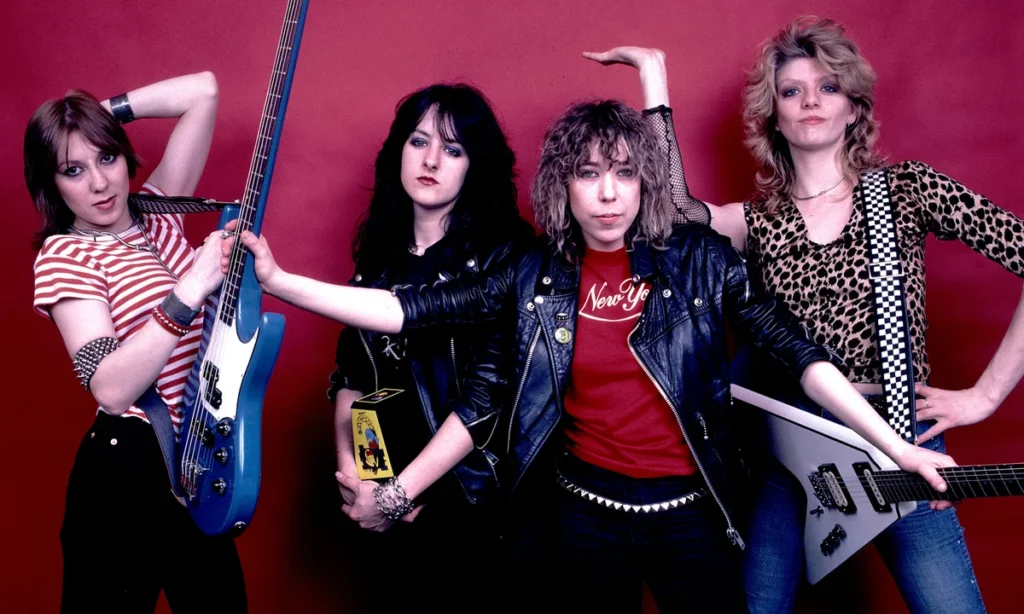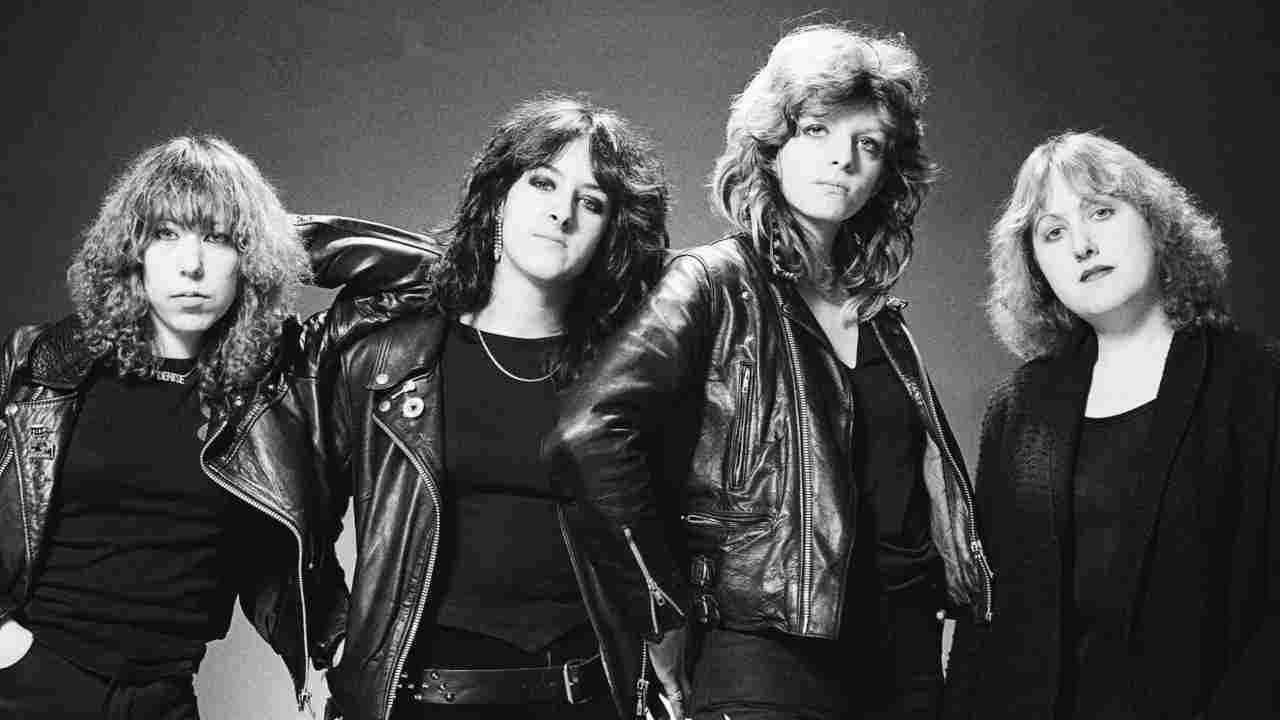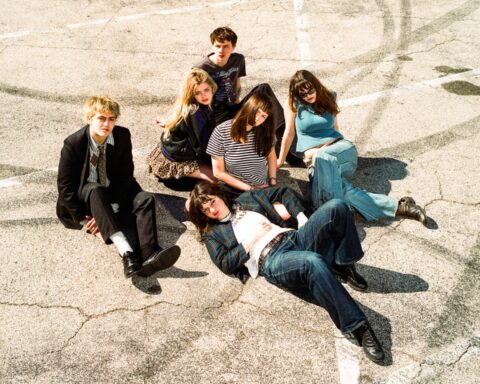Girlschool, initially known as Painted Lady, began its journey in 1975. Formed by Enid Williams and Kim McAuliffe, the group sought to break the barriers often encountered by female musicians within the largely male-dominated heavy metal scene. Their early days were marked by both excitement and struggle as they endeavored to carve out a unique space in rock music.
Joining forces with the dynamic guitarist Kelly Johnson and the steadfast drummer Denise Dufort, the lineup solidified, bringing a blend of diverse talents and unyielding dedication. The chemistry amongst the members of Girlschool was palpable. This connection was pivotal as they navigated through an industry that was not always welcoming to women musicians. Their shared love for hard-hitting music and their mutual respect for each other’s abilities allowed them to weather the challenges they faced.
In 1978, the evolution from Painted Lady to Girlschool marked a turning point for the band. This rebranding was not merely a change in name but signified their readiness to assert a stronger identity in heavy metal. They continued to hone their craft, performing invigorating gigs that captured the attention of audiences and critics alike. Early demos showcased their raw energy and potential, making waves in a genre that was witnessing a monumental shift. With each performance, they solidified their reputation as formidable contenders in rock and heavy metal.

Girlschool’s early trials and triumphs were foundational to their career and instrumental in setting the stage for their future success. Their perseverance and originality not only garnered them a dedicated following but also paved the way for subsequent generations of female rock and heavy metal musicians.
Breakthrough and Collaborations
Girlschool’s ascent to stardom began in the late 70s when they signed with City Records, marking the start of a prolific period in the heavy metal scene. Their collaboration with Motörhead on the single ‘Please Don’t Touch’ was instrumental in gaining widespread recognition. This partnership not only showcased their ability to blend seamlessly with other rock giants but also brought them critical acclaim. The energetic dynamism of this track solidified their reputation as formidable contenders in a male-dominated industry.
The release of their debut album ‘Demolition’ in 1980 was a definitive moment for Girlschool. Songs like “Race with the Devil” and “Take It All Away” garnered significant attention, highlighting their raw and powerful sound that was both gritty and melodic. This album’s success was a harbinger of the groundbreaking work that was to follow. Their sophomore effort, ‘Hit and Run’ (1981), reaffirmed their prowess. The album peaked at number 5 on the UK Albums Chart, propelled by high-energy tracks such as “C’mon Let’s Go” and the titular “Hit and Run.” This period also witnessed vibrant live performances that captivated audiences and proved they could command the stage with the same intensity as their recorded music.
Continuing their upward trajectory, Girlschool’s third album, ‘Screaming Blue Murder’ (1982), further cemented their place in the New Wave of British Heavy Metal (NWOBHM) movement. This album expanded their sound and showcased their versatility, featuring tracks that ranged from hard-hitting anthems to more intricate compositions. Critical and commercial receptions were largely positive, recognizing the band’s ability to evolve while staying true to their heavy metal roots.
Their distinctive sound—marked by driving riffs, sharp vocals, and relentless energy—set Girlschool apart from their contemporaries. Their contributions during the late 70s and early 80s not only shaped their legacy but also paved the way for future generations of women in rock and heavy metal music, making them enduring icons in the genre.
Impact and Legacy in a Male-Dominated Genre
Amid the roaring waves of heavy metal in the late 70s and early 80s, Girlschool emerged as a formidable force, shattering the gender norms entrenched in rock and heavy metal music. Their presence on the scene was not merely a novelty; it was a revolution that paved the way for subsequent generations of female musicians. The band’s raw talent and relentless determination earned them respect from their male contemporaries, as evidenced by their collaboration with Motörhead on the tour and the single “Please Don’t Touch.”
Girlschool’s influence extended far beyond their gritty riffs and powerhouse performances. They became symbols of female empowerment in an overwhelmingly male-dominated genre. As trailblazers, they demonstrated that women could excel in heavy metal music with the same ferocity and expertise as their male counterparts. This redefined the possibilities for female musicians, contributing significantly to the genre’s evolution and cultural landscape.
Testimonials from other artists underscore Girlschool’s profound impact. Joan Jett, a rock icon, has often cited Girlschool as one of her key inspirations. Numerous bands, spanning various sub-genres of rock and metal, have acknowledged Girlschool’s role in busting gender barriers. Their influence resonates through the annals of music history, echoing in the works of contemporary female-fronted bands like Halestorm and Arch Enemy.
Recognition of Girlschool’s achievements is well-documented. They have received numerous accolades and maintained a loyal fanbase spanning different generations. Their music continues to be celebrated at festivals, and their pioneering spirit is commemorated by critics and fans alike. With a career extending over four decades, Girlschool has shown the enduring power and relevance of their contributions. Their legacy is not just enshrined in their music but also in the paths they have cleared for others. The cultural significance of Girlschool’s contributions lies in their ability to inspire and empower future generations of women in rock and heavy metal, ensuring that the genre remains vibrant and inclusive.

Challenges, Decline, and Resurgence
Throughout their illustrious career, Girlschool encountered numerous challenges that tested their resilience and determination. Frequent lineup changes were one of the persistent issues, as band members came and went amid personal and professional shifts. These transitions often disrupted creative cohesion, making it difficult to maintain a consistent musical direction. Moreover, the evolving landscape of rock and heavy metal during the 80s and 90s brought about significant pressures to adapt to changing trends. The rise of different subgenres and the dominance of male counterparts in the industry intensified the struggles for an all-female heavy metal band.
By the mid-80s, these combined challenges led to a decline in Girlschool’s prominence. Their commercial success waned, and the strain of touring and producing new music began to take its toll. However, this period of decline was not the end of Girlschool’s journey. Their indomitable spirit facilitated a remarkable resurgence in the late 90s and 2000s. The band returned to the studio, producing new albums that reinvigorated their sound and stayed true to their heavy metal roots while still appealing to contemporary audiences.
Tours during this era played a crucial role in rekindling their relationship with longtime fans and attracting newer generations. Girlschool’s ability to adapt without compromising their identity has been pivotal to their lasting impact in the music world. Their resurgence not only marked a revival but also solidified their status as pioneering figures in heavy metal. Through perseverance and adaptability, they demonstrated that obstacles could be transformed into opportunities for growth and reinvention.
Ultimately, Girlschool’s legacy is one of remarkable strength and enduring influence. Their journey from the trials of the music industry to their celebrated return underscores their role as trailblazers for women in rock and heavy metal. Today, they continue to command respect and inspire countless musicians, solidifying their place in music history as icons of heavy metal essence.









